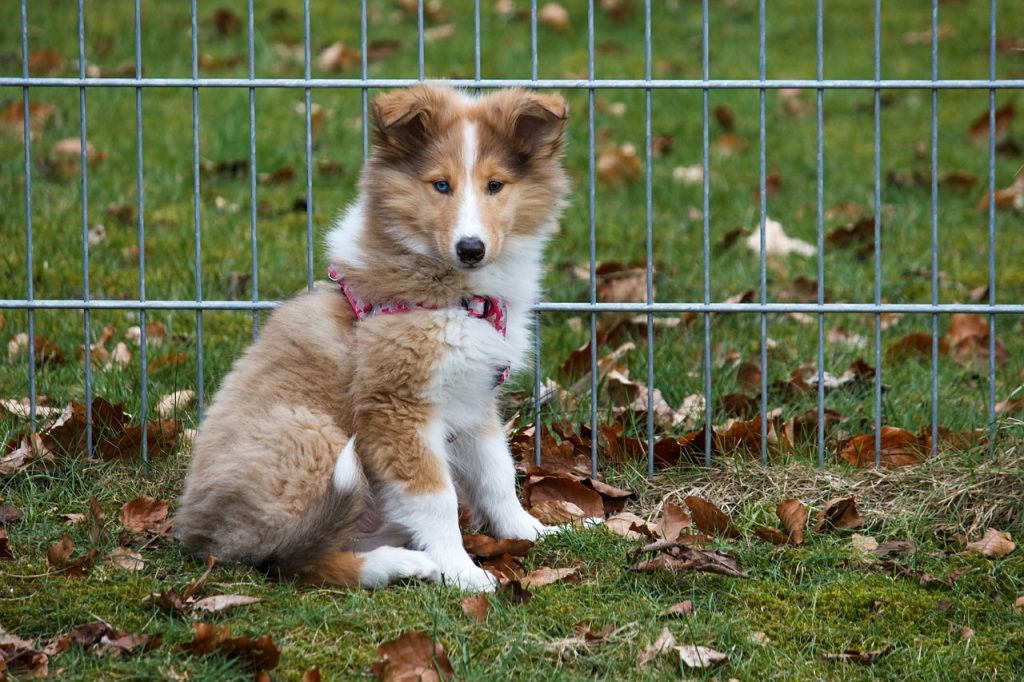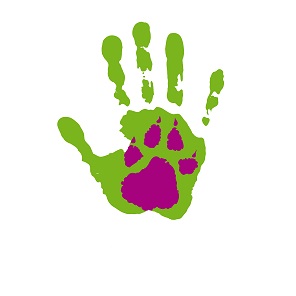Puppy’s First Lessons: Attachment, Development, Emotions

The first thing most puppy owners want to teach their dog is to sit, stay, heel, stop chewing, and go potty at a convenient time. Unfortunately they are missing a great opportunity to make their dogs focused, easy to train, and calm – for the rest of the dog’s life.
Exposure, good and bad, in the first 14 weeks of a dog’s life will affect the way your puppy processes sensory input. That’s right – you only have 14 weeks, max. Many reputable vets and trainers (Dr. Ian Dunbar) states that the limit is week 12. That gives you 4 weeks from picking your puppy up, until its brain is fully developed.
How you expose your puppy will determine how they think, feel, behave, regulate their biological systems, and whether they ‘want’ to work for you, or they want to be independent.
Bad exposures, like being traumatized by a sever punishment (isolated bad incidents) produce conditioned behavior that is linked to a biologic response. This means that it isn’t about ‘training’ your adult dog to stop inappropriate behavior. It is about trying to alter the chemical balance in the bran so that the dog can learn a new set of more appropriate behaviors.
What Does This Mean?
It means that in the first month you own your puppy you are either setting it up to be an obedient, well mannered, puppy. Or, you are letting it run wild and practice aggression, hunting, digging, and other survival skills that ‘do not’ involve obeying you.
But My Puppy is So Well Behaved
Unfortunately, in the first 5 months of a puppies life it has a high level of chemicals in it, like oxytocin, that help them remain calm and safe. These chemicals keep the puppy from leaving the safety of the pack and go explore. They keep the puppy from challenging older dogs and being hurt. They also keep the puppy from investigating strange animals that might want to harm the puppy. Mother nature has developed a great method of keeping puppies safe. She creates high level of ‘happy’ and ‘calming’ drugs.
At about 20 weeks those drugs fade. The result is an out of control puppy. What can you do? Nothing. The puppy’s emotions, attachment levels, and response to stimulus (calm, aggressive, run away) are already set. All you can do now is to learn how control the puppy.
What is the Right Way to Raise a Puppy?
1. Introduce the puppy to a new experience every day. This should be something the puppy sees, smells, touches etc. You can find dozens of things in your home or yard to get started.
2. Puppy should see new people and new dogs daily. An off leash puppy play session is perfect for this. Do not take your puppy to a dog park, or force it to meet other dogs on leashes. This could set your puppy up for a ‘bad’ emotional response.
3. The #1 gift you can give your puppy is to interact with it. Teach the puppy to follow you. If it is not engaging with you then have it in a confined area. The ‘follow’ behavior and redirect impulse are the foundation for reliable obedience.
4. Make every situation fun. Socializing isn’t about forcing your puppy to engage with scary things. It is about having fun with your puppy and letting the puppy choose whether to engage, or not. If the puppy says no, then leave it for today. There is always another day.
5. Make the puppy think. Brain games are a great way to stimulate a puppies mind.
6. Don’t let your puppy learn to be afraid of noises, strangers, animals – or you. A lot of people are surprised to learn that their puppy has been taught (by them) to fear them.
7. ‘4 on the Floor’ – Keep your puppy on the floor. Don’t always coddle and rescue your puppy. The puppy cannot learn confidence if it is always on the floor.
8. Teach the puppy calm. Reward the puppy when it is calm.
a. Teach the puppy to just ‘sit and look.’ Many of us walk puppies and let them engage with everything, then wonder why they are pulling on the leash and ignoring us when they are older.
9. Teach your puppy and let it make mistakes. I never correct a puppy under 6 months. In fact, I teach the puppy. But remember, there is a difference between teaching and learning. Just because your puppy can do something a few times doesn’t mean it has learned.
10. Last, I make every interaction with me the most wonderful thing the puppy could ever imagine. Being around me brings out the best emotions.
So keep this in mind when you are socializing and you are building the foundations of a great dog.
Happy
Calm
Safe
Download Our Puppy Primers:
First 10 Days Your Puppy Comes Home
Puppy Primer – Stop Puppies From Biting
